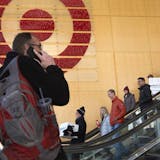More than 130,000 Minnesota nonprofit employees — a third of all nonprofit workers in the state — have filed for unemployment since the COVID-19 pandemic broke out this spring.
State data show that the nonprofit sector has been disproportionately hit by the economic crisis during the pandemic, with shuttered events and programs wiping out revenue.
Minnesota's overall unemployment rate fell to 8.6% in June, according to figures released Thursday by the state, down from a record high of 9.9% in May and reflecting the easing of COVID restrictions. But the state's jobless rate remains nearly triple what it was before the pandemic.
Minnesota's 390,000 nonprofit workers make up 14% of the state's workforce. But the 63,000 nonprofit workers who had their hours or jobs cut in April represented 19% of the state's initial unemployment claims.
Another 24,000 nonprofit workers lost their jobs or had their hours cut in May, representing nearly 18% of state claims. By June, nonprofit workers accounted for nearly 14% of Minnesotans who filed for unemployment.
"It's the biggest reduction of force since the beginning of nonprofits," said Jon Pratt, executive director of the Minnesota Council of Nonprofits. "So many nonprofits do their work in person or at large events. ... For many organizations, what they do is impossible" with COVID restrictions.
Allison Swanson was laid off Wednesday from her job of five years with the Minnesota Historical Society, staffing the front desk and leading tours at the James J. Hill House in St. Paul. The 32-year-old from South St. Paul is looking for a job as a tutor or secretary since museum gigs are scarce, if not nonexistent.
"Nobody knows what's going to happen next," she said. "We all have to think of our futures in different ways."



